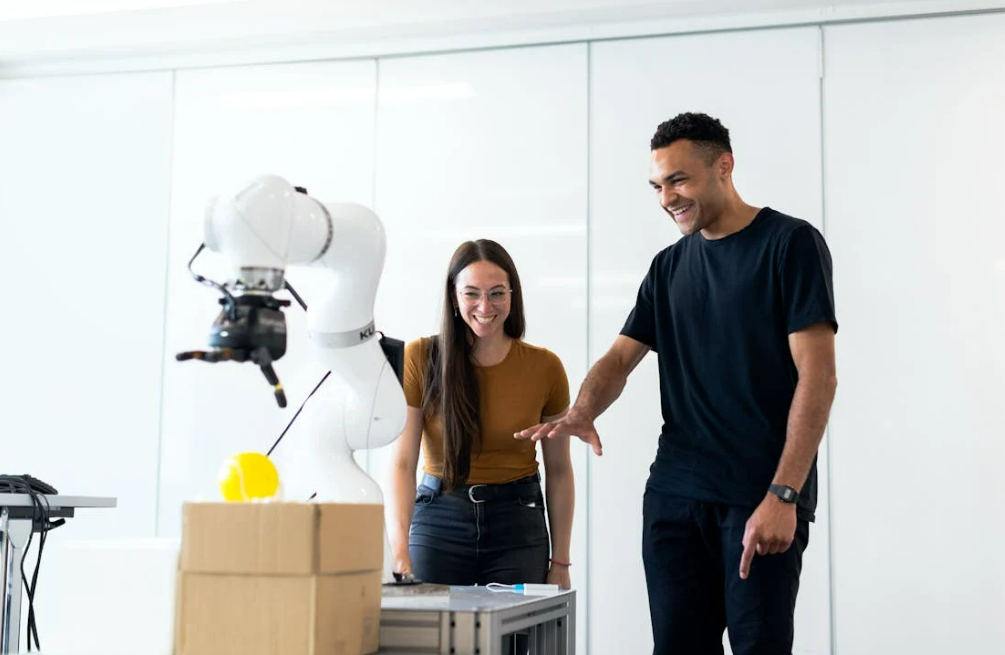Max66, Arsgroup777, ARS Group Exchange: The concept of robotics dates back to ancient times, with early automatons and mechanical devices exhibiting rudimentary automation features. However, it was not until the 20th century that significant advancements in robotics technology began to emerge. One key milestone in robotics evolution was the creation of “Unimate” by George Devol and Joseph Engelberger in 1954, considered the world’s first industrial robot. This invention revolutionized the manufacturing industry by introducing automation to production lines, setting the stage for the widespread integration of robotics in various sectors.
Another pivotal moment in the evolution of robotics was the development of the “Stanford Arm” in the 1960s by Victor Scheinman. This robotic arm had six electromechanically driven axes, allowing for greater flexibility and precision in performing tasks. The Stanford Arm laid the groundwork for the advancement of robotic manipulators and paved the way for innovations in robotic surgery, space exploration, and other fields. These key milestones in robotics evolution marked the beginning of a new era, where machines were increasingly capable of performing complex tasks autonomously, reshaping industries and opening up new possibilities for human-robot collaboration.
- The roots of robotics technology can be traced back to ancient times when inventors and thinkers envisioned machines that could mimic human actions. One of the earliest known examples is “The Dove,” a mechanical bird designed by Archytas of Tarentum in ancient Greece. This machine, fueled by steam, is considered one of the first instances of autonomous movement in history.
- Centuries later, during the Renaissance, inventors like Leonardo da Vinci sketched designs for robotic knight machines and automated carts. These conceptual drawings laid the foundation for future developments in robotics technology. The desire to create lifelike machines that could perform tasks independently continued to inspire inventors throughout history, leading to the birth of modern robotics as we know it today.
- • The roots of robotics technology can be traced back to ancient times
- • “The Dove,” a mechanical bird designed by Archytas of Tarentum, is one of the earliest known examples
- • Leonardo da Vinci sketched designs for robotic knight machines and automated carts during the Renaissance
- • These conceptual drawings laid the foundation for future developments in robotics technology
Industrial Revolution and Automation
Ars247, Wazeerexch, Peachexch: The Industrial Revolution marked a pivotal point in history when automation began revolutionizing the manufacturing sector. Factories incorporated machines to carry out tasks that were once done by hand, increasing efficiency and production output. This transition to automation not only boosted economic growth but also transformed the way goods were produced on a large scale.
As automation technologies continued to advance during the Industrial Revolution, industries such as textiles, mining, and transportation saw significant improvements in their operations. Machines like the spinning jenny and steam engine played a vital role in streamlining production processes and minimizing human labor. With the integration of automation, businesses were able to meet the growing demands of consumers and expand their reach in the global market.
What are some key milestones in the evolution of robotics?
Some key milestones in the evolution of robotics include the invention of the first industrial robot by George Devol in 1954, the introduction of the first digitally operated and programmable robot by Unimation in 1961, and the development of more advanced robots with artificial intelligence capabilities in recent years.
What were the early beginnings of robotics technology?
The early beginnings of robotics technology can be traced back to ancient civilizations such as the Egyptians, Greeks, and Chinese who created automata – mechanical devices that could perform simple tasks. The modern era of robotics began in the 20th century with the invention of the first industrial robots for manufacturing processes.
How did the Industrial Revolution impact automation?
The Industrial Revolution played a significant role in the development of automation by introducing new technologies such as steam power, electricity, and mass production techniques. These advancements led to the creation of automated machines and systems that revolutionized industries, increased productivity, and changed the way work was done.
Read Also:
- Unveiling The Mystery: What is CBDa and Why Should You Care?
- Understanding CBD Oil and Cancer: Separating Fact from Fiction
- CBD for Tinnitus: Exploring the Potential and Addressing the Uncertainties

